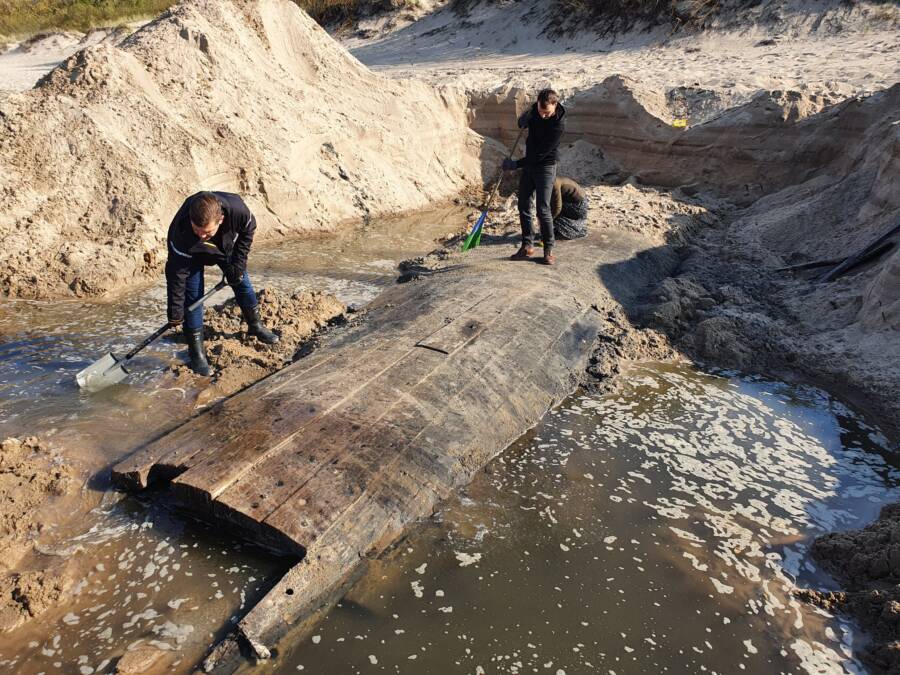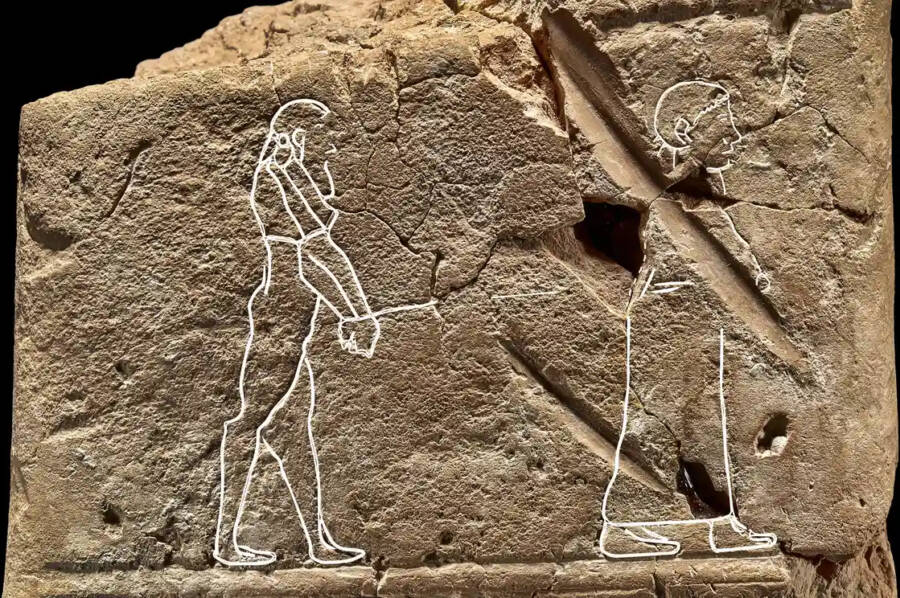Mysterious shipwreck found on a Latvian beach, date of Vikings' arrival in the Americas uncovered, oldest-known depiction of a ghost found on an ancient tablet.
200-Year-Old Shipwreck Uncovered Just Beneath The Sand On A Beach In Latvia

Rīgas Brīvosta/FacebookJust after archaeologists began digging, it became clear that a vessel measuring in at a whopping 40 feet was sitting just below their feet.
Archaeologists in Latvia just uncovered a shipwreck right under the sand along the Baltic Sea right near the capital of Riga. But because the sunlight and the air caused the ship to begin decaying as soon as it was uncovered, archaeologists quickly filled the site back in and now seek to determine the best way to preserve the wreck long term.
“Finding such a large fragment of shipwreck on the coast is a rare event,” said archaeologist Janis Meinerts, “and preserving it for future generations and exhibiting it is a difficult task. The worst thing would be to do it recklessly.”
See more of this astounding find and learn the full story behind it here.
Researchers Just Confirmed The Exact Date When Vikings Lived In North America — 500 Years Before Columbus

Dylan Industries/FlickrRecreated Norse buildings at L’Anse aux Meadows in Newfoundland.
For years, scholars have only been able to guess when the Vikings first stepped foot in the Americas. But a remarkable new study that used wood artifacts and knowledge of solar storms has provided the first definitive date. The Vikings lived in Newfoundland exactly 1,000 years ago in the year 1021.
“Our new date lays down a marker for European cognizance of the Americas,” explained the study, published in Nature. “And represents the first known point at which humans encircled the globe.”
Dig deeper in this report.
The Oldest Known Depiction Of A Ghost Was Just Found On 3,500-Year-Old Babylonian Tablet

The British MuseumThe clay tablet is 3,500 years old and was acquired by the British Museum in the 19th century.
It’s only appropriate for the Halloween season that researchers have officially discovered the oldest known depiction of a ghost. Spotted on a 3,500-year-old Babylonian tablet stored in the British Museum since the 1800s, the illustration had been overlooked until now.
The faded drawing can only be seen from above and under a light, which is why it went un-discovered for so long. Fortunately, the required viewing angle for these faded outlines was caught by Dr. Irving Finkel, curator of the museum’s Middle Eastern department. He also managed to properly translate the cuneiform inscription for the very first time — and identified it as an exorcist’s guide to peacefully banish lonely spirits to the afterlife.
Read on here.





